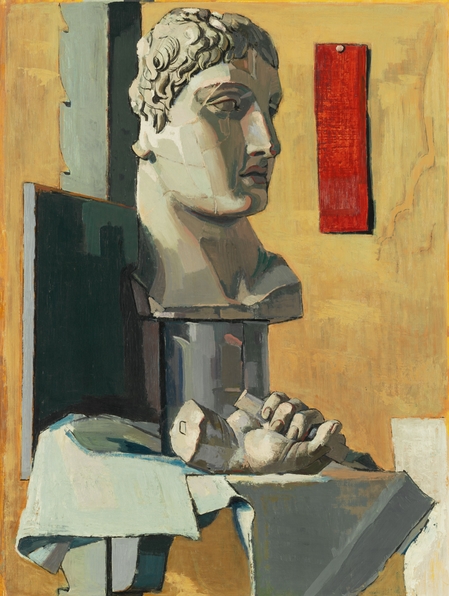Estate of artist Kay Heinrich Nebel discovered
After many years of research, Prof. Dr. Kai-Uwe Hemken from the Kunsthochschule Kassel discovered the previously unknown estate of the artist Kay Heinrich Nebel in Washington D.C. and Maryland in January 2025. Now, under Hemken's direction, the collection is being scientifically examined and documented. Nebel, an important representative of New Objectivity, left his mark on the Kunsthochschule Kassel for decades. The discovery proves Nebel's opposition to National Socialism.
The artistic estate comprises 857 works on paper and 56 works on canvas or wood. These are works from all of Nebel's creative periods. In addition, numerous letters were found that provide information about the situation at the Kunsthochschule Kassel in the 1920s. The works and documents were previously kept by the artist's youngest daughter. Hemken was able to view them together with an assistant during two business trips and record them according to professional museum standards.
Hemken and his team are researching the history of the Kunsthochschule Kassel in the period from 1900 to 1960 and spent around two years conducting intensive research on Nebel: "Kay Heinrich Nebel was always a mystery - there were hardly more than a few historical publications and a few archival documents. Nobody knew what had happened to his work or his letters," explains Hemken. A private contact in Kassel provided the decisive clue and finally access to the Nebel family in the USA.
Nebel, who was prominently represented in the legendary "New Objectivity" exhibition at the Kunsthalle Mannheim in 1925, was one of the formative personalities of the Kunsthochschule Kassel. From the early 1920s until the 1950s, he was a professor at what was then the Werkakademie, and at times also its director. For over three decades, he played a key role in shaping the direction of the art academy in conceptual, artistic and pedagogical terms. Thanks to his influence, the academy was already considered one of the most progressive of its time during the Weimar Republic. This development continued after the Second World War.
It is only through the examination of his written legacy that his aspirations as an artist of New Objectivity become clear. This art movement emerged after the First World War and stands for a return to the visible and concrete. During National Socialism, Nebel took part in ten major exhibitions at the Reichskammer der bildenden Künste and applied for membership of the NSDAP in 1937, but his works in the Neue Galerie collection were defamed as 'degenerate' and removed. "The letters show: Nebel was a staunch opponent of National Socialism and its art and ideology," says Hemken. His legacy is therefore of particular importance to the Kunsthochschule Kassel and the city of Kassel. It not only documents an impressive artistic oeuvre, but also the history of an institution that Nebel played a decisive role in shaping.
The project is supported by close cooperation with the Hessian State Museum Kassel, the Neue Galerie, the City Museum, the City Archive, the University Archive and numerous museums and archives throughout Germany. A special presentation of his estate is planned as part of an exhibition to mark the 250th anniversary of the Kunsthochschule in 2027. This will be followed by a joint exhibition with the Hessian State Museum and the Neue Galerie.
The roots of the art academy lie in the "L'Académie de Peinture et de Sculpture de Cassel", founded in 1777. Over the years, the Kunsthochschule Kassel has been repeatedly shaped by the trends of the time. Today's orientation goes back to the merger of the State Academy of Fine Arts with the Werkkunstschule in the 1970s. On August 2, 1971, the institution was finally integrated into the newly founded Gesamthochschule Kassel.
The project is financially supported by the University of Kassel (7,000 euros) and the Gerda Henkel Foundation (10,000 euros).
Source:
www.uni-kassel.de

